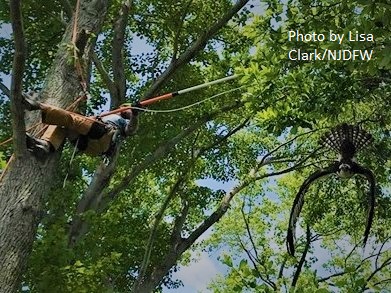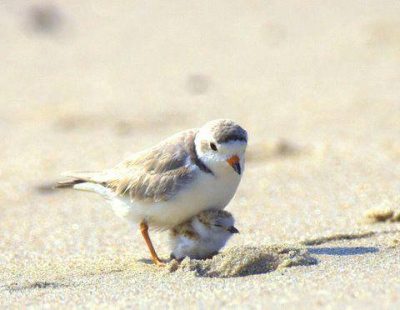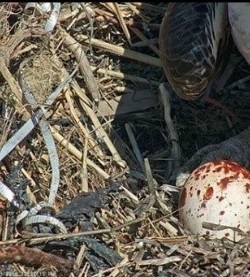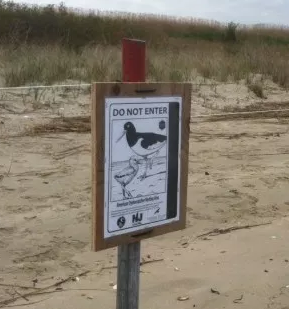HOW YOU CAN HELP: SHOREBIRDS AND SEABIRDS
By Alison Levine
Update May 30, 2019: Another example of the dangers of fishing (or this time crabbing) line unfolded in dramatic fashion in Tuckahoe Wildlife Management Area. CWF biologist Ben Wurst was called upon to put his climbing skills to the test to help an osprey dangling high above the ground. Thankfully Ben was able to get to the bird in time, and our friends at Tri-State Bird Rescue and Research nursed the osprey back to health and were able to re-release him near where he was found. Read more about the daring rescue on our Facebook page.

to rescue and entangled osprey
As thousands of people plan their trips to the Jersey shore for Memorial Day weekend, it is a good time think about how to help out shore and sea birds. Enjoy the holiday weekend!
The 141 miles of seashore in New Jersey are home – or at least part-time host – to many of the birds Conserve Wildlife Foundation protects and nurtures. Osprey, oystercatchers, black skimmers, piping plovers, red knots, and many others rely on a healthy coast to thrive.

We are often asked if one person can make a difference for New Jersey’s imperiled wildlife, and the answer is a resounding yes. Here’s how you can help our sea and shore birds.
SHARE THE SHORE
If you live near or are visiting our beaches, you can help protect beach nesting birds by following a few simple rules:
• Keep the shore tidy! Don’t litter and help clean up litter where you can. Make an outing of it, take before and after photos of your clean up and post them on social media tagged #TrashTag – you will be part of a world-wide clean up effort. Some types of litter that are extremely damaging to shore and sea birds are:

Fishing line. Many shore birds, migratory birds, waterfowl, and raptors have become entangled in monofilament and died. This oystercatcher (right, photo by Randy Lubischer) became entangled but was lucky enough to be rescued and cut free by CWF and our partners.

Balloon ribbon and string looks like eel grass, which is one of the osprey’s favorite nest building materials. Osprey will bring the ribbon or string back to their nest where it can pose a lethal threat to the birds. Our osprey cam recently captured this photo showing a ribbon in a nest near Barnegat Bay.
• Do not chase, approach, or linger near birds or their nesting areas, or in any way harass birds.
• Control dogs (or better yet leave them home). Dogs can chase or frighten adult birds and their chicks, sometimes even eating or stepping on eggs and chicks. Dogs are not permitted on most beaches during the nesting season, but if they are allowed, keep them leashed and well away from nesting areas.
• Keep cats indoors. Cats kill millions of birds each year, including our beach nesters.
• Do not leave or bury trash or food scraps on the beach. Garbage attracts predators, such as gulls, crows, red foxes, raccoons, skunks, and cats, which may prey upon eggs or chicks. And please do not feed any of these predators.
• Respect all areas fenced or posted for the protection of wildlife.

For more information on protecting shorebirds see:
Discover more from Conserve Wildlife Foundation of NJ
Subscribe to get the latest posts sent to your email.